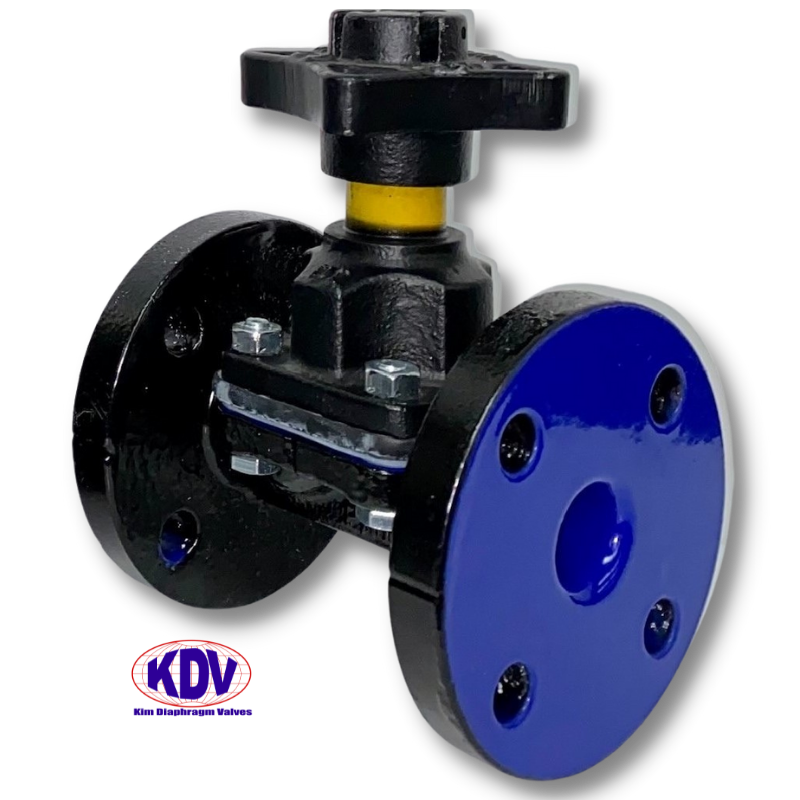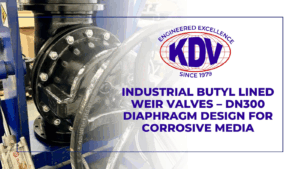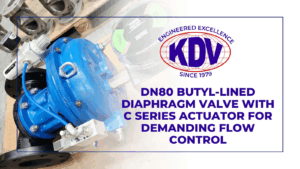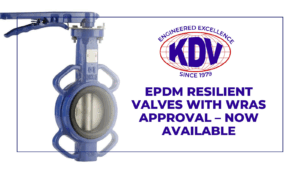KDV Brings You a Wide Variety of Glass-Lined Valves that Shine
Corrosion, wear, and strict hygiene requirements can make industrial operations challenging. That’s where KDV’s glass-lined diaphragm valves come in. Engineered for durability and reliability, these valves are built to withstand aggressive chemicals, abrasive materials, and harsh environments while delivering exceptional performance.
Why KDV’s Glass-Lined Diaphragm Valves Outperform Other Types of Valve
Not all valves are built to withstand the harsh realities of industrial applications, where exposure to aggressive chemicals, extreme temperatures, and strict hygiene requirements can lead to rapid deterioration. That’s why KDV’s glass-lined valves are the preferred choice for industries demanding long-term performance, reliability, and efficiency.
MUST KNOW:
Glass is one of the most chemically resistant materials available, impervious to nearly all acids except hydrofluoric acid. This makes glass-lined valves the ultimate defense against corrosion in chemical processing and pharmaceutical industries, where even stainless steel can degrade over time.
- Longer Lifespans: Glass-lined diaphragm valves significantly outlast traditional valve types in corrosive and abrasive environments, reducing downtime, maintenance costs, and process interruptions.
- Versatile Across Industries – Our extensive range of glass-lined valves, including the weir-type diaphragm valve, is designed for applications requiring precision flow control, superior corrosion resistance, and strict hygiene compliance.
- Low Maintenance: Built from high-durability materials, KDV’s glass-lined valves require minimal maintenance, helping industries reduce labor costs and improve operational efficiency
How Glass-Lined Valves Are Built:
1.Core Material Selection:
The base structure of the valve is typically made from a durable metal, such as cast steel, carbon steel, or stainless steel. This provides the valve with mechanical strength to handle pressure and stress.
2.Preparation of the Base Surface:
The inner surfaces of the valve body are thoroughly cleaned and treated to ensure adhesion. This involves:
- Sandblasting or grinding to create a rough surface.
- Cleaning to remove any grease, dirt, or residue.
3.Glass Coating Application:
- Glass Composition: The glass lining is made from a specific blend of silica, borates, and other additives tailored to resist chemical corrosion and temperature fluctuations.
- Application Process: The glass is applied in powder or slurry form, coating the internal surfaces of the valve. This can be done manually or using automated equipment to ensure even application.
4.Firing Process:
The coated valve is placed in a high-temperature kiln and fired at temperatures between 800°C and 1,000°C. During this process:
- The glass melts and forms a smooth, uniform layer.
- The glass bonds chemically and mechanically to the metal surface.
5.Quality Inspection and Finishing:
- The valve is inspected for defects like cracks, uneven coatings, or bubbles.
- Any imperfections are repaired through additional firing or re-coating.
- The valve is then assembled with components like seats, seals, and actuators.
Why Opt for Glass-Lined Diaphragm Valves for Your Industrial Applications?
For industries dealing with highly corrosive fluids, extreme temperatures, and strict hygiene requirements, choosing the right valve material is critical. Let’s take ss lining for example: stainless steel valves are widely used, however they are not always the best option when facing aggressive chemical environments. Here’s why glass-lined diaphragm valves outperform stainless steel in demanding industrial applications.
THE CORROSION SHOWDOWN
Stainless steel, though resistant to many chemicals, is still vulnerable to pitting, stress corrosion cracking, and gradual degradation when exposed to strong acids, alkalis, and aggressive solvents. Glass-lined valves, however, offer an inert, seamless barrier that is nearly impervious to chemical attack, ensuring longer-lasting performance and reduced maintenance needs.
- Outstanding Corrosion Resistance: The glass lining forms a chemically inert shield, making it resistant to harsh acids, caustic solutions, and oxidizing agents that can weaken stainless steel over time. This safeguards equipment integrity and significantly reduces owntime due to corrosion-related failures.
- Hygienic and Sterile Design: Unlike stainless steel, which can develop microscopic scratches and crevices where bacteria and residues accumulate, glass-lined valves have a smooth, non-porous surface. This makes them ideal for pharmaceuticals, food production, and water treatment, where sterility and contamination prevention are paramount.
- Exceptional Durability: Stainless steel can suffer from erosion and surface wear, particularly in high-temperature or high-abrasion applications. Glass-lined valves maintain their structural integrity even under extreme conditions, offering greater longevity and lower maintenance costs.
- Optimal Performance: When compared to stainless steel valves, glass-lined diaphragm valves consistently deliver superior chemical resistance, minimal buildup, and enhanced operational precision, making them the go-to choice for industries that cannot afford material degradation or contamination risks.
Industries That Benefit from KDV’s Glass-Lined Diaphragm Valves
- Acid Transfer and Handling: Glass-lined diaphragm valves are a standard choice for transporting highly corrosive acids like hydrochloric, sulfuric, or nitric acid. The glass lining prevents corrosion and extends the valve’s service life in such harsh conditions.
- Solvent Handling: These valves provide an inert and non-reactive surface, making them suitable for managing VOCs and solvents used in chemical synthesis and purification.
- Corrosive Media Control: In reactors, distillation columns, and pipelines, the valves’ resistance to corrosive substances ensures operational safety and reliability.
- Active Pharmaceutical Ingredient (API) Production: The smooth, sterile surface of glass-lined valves prevents contamination and enables precise flow control during API production.
- Sterile Filtration Systems: These valves are critical in maintaining sterility and ensuring contamination-free operations in filtration and separation processes.
- Cleanroom Distribution Networks: Glass-lined valves facilitate the transport of purified water, steam, and other critical fluids while meeting strict aseptic standards.
- Acidic Product Transfer: In processing acidic products like fruit juices, vinegar, and sauces, glass-lined valves protect against corrosion and ensure product purity.
- Cleaning-in-Place (CIP) Systems: The valves can handle aggressive cleaning agents such as caustic or acid washes, maintaining durability and cleanliness.
- Dairy and Syrup Pipelines: Their smooth, non-stick surface ensures hygienic transfer of viscous or sugar-rich liquids without contamination or clogging.
- Chlorine Dosing Systems: Glass-lined valves resist chlorine’s corrosive effects, ensuring consistent dosing in water disinfection processes.
- Desalination Processes: They effectively manage brine and other corrosive salts involved in reverse osmosis and filtration stages.
- Wastewater Neutralisation: The valves reliably handle acidic or alkaline chemicals used to adjust pH levels in wastewater treatment systems.
Frequently Asked Questions (FAQ) – Glass-Lined Diaphragm Valves
1. How do glass-lined diaphragm valves compare to stainless steel valves in corrosive environments?
Glass-lined diaphragm valves offer superior chemical resistance compared to stainless steel. While stainless steel is durable, it is susceptible to pitting, stress corrosion cracking, and gradual degradation when exposed to strong acids and aggressive chemicals. Glass-lined valves create an inert, non-reactive barrier, making them nearly impervious to chemical attack and significantly reducing the risk of corrosion-related failures.
2. What are the main maintenance considerations for glass-lined diaphragm valves?
Glass-lined diaphragm valves require minimal maintenance due to their corrosion-resistant and non-stick properties, but routine checks are still essential to ensure long-term reliability.
3. Are used glass-lined valves a viable option for industrial applications?
Used glass-lined valves can be a cost-effective option, but their condition, integrity, and coating quality must be carefully evaluated. Over time, glass linings may develop micro-cracks, wear spots, or damage from thermal cycling, which can compromise performance and chemical resistance. For critical applications, new glass-lined valves ensure maximum reliability, longevity, and compliance with industry standards.

At KDV, we help businesses select the ideal glass-lined valve for their specific application, ensuring optimal performance, durability, and cost efficiency. With a wide range of sizes, materials, and designs available, our team provides expert guidance to match each valve to your operational needs.
Ready to improve reliability and reduce maintenance in your operations? Explore KDV’s range of glass-lined diaphragm valves today.
Contact us for a consultation / distributor agreement and find out how our innovative solutions can meet your industrial flow control goals.


